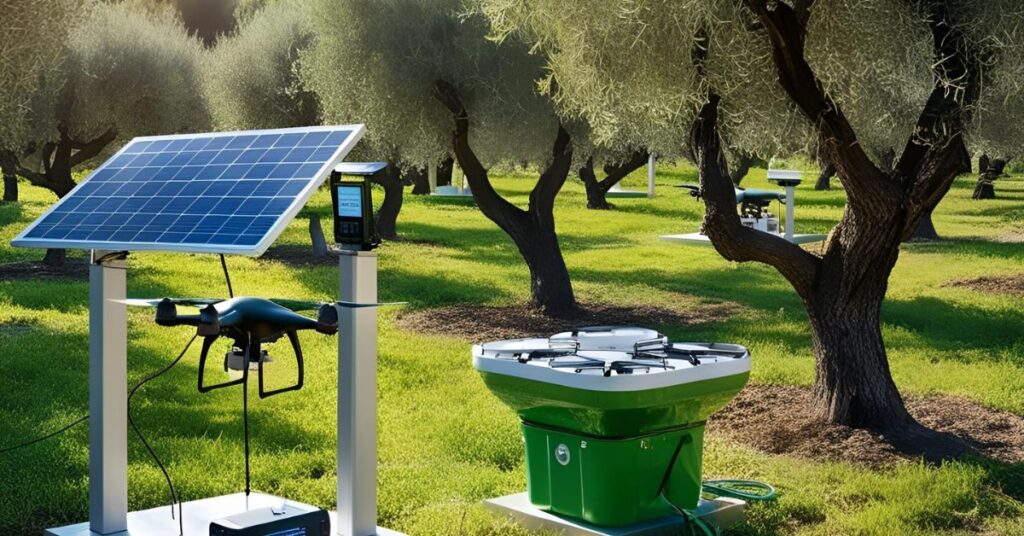
New Technology for Olive Cultivation

Transforming Tradition with Innovation
Olive cultivation has been a cornerstone of agriculture in Mediterranean regions for thousands of years. With its deep cultural roots and economic importance, olive farming has traditionally relied on manual labor and generational knowledge. However, in recent years, a wave of technological innovation has begun to reshape this ancient practice. From AI-powered monitoring systems to robotic harvesters, new technologies are helping farmers increase efficiency, reduce costs, and improve the quality of their olives.
Smart Irrigation and Soil Monitoring
Water management is a critical aspect of olive farming, especially in drought-prone regions. New smart irrigation systems use IoT sensors and satellite data to monitor soil moisture in real-time. These systems can deliver precise amounts of water based on the actual needs of the plants, dramatically reducing water waste. Technologies like drip irrigation paired with soil sensors help maintain optimal growing conditions while conserving resources.
Drones and Aerial Imaging
Drones equipped with multispectral and thermal cameras are now being used to survey olive groves from above. These aerial views allow farmers to detect early signs of disease, pest infestations, or water stress—often before they are visible to the naked eye. The data collected helps farmers make informed decisions on crop treatments, reducing the use of pesticides and fertilizers.
Artificial Intelligence and Data Analytics
AI is transforming the decision-making process in olive cultivation. Machine learning models analyze data from sensors, drones, and weather forecasts to provide actionable insights. For example, predictive analytics can determine the best times for pruning, fertilizing, and harvesting. These insights help farmers plan more effectively and avoid costly mistakes.
Robotic Harvesting
One of the most labor-intensive parts of olive farming is harvesting. Robotic harvesters, which were once considered futuristic, are now being tested and deployed in modern groves. These machines can navigate between trees and gently shake branches or collect fallen olives without damaging them. Robotic systems are especially beneficial in regions facing labor shortages and rising wage costs.
Disease Detection and Prevention
Technologies like remote sensing and AI-driven diagnostics are making it easier to detect and manage olive tree diseases such as Xylella fastidiosa. Early detection tools, including lab-on-chip devices and mobile testing kits, allow for faster response times and better containment strategies, helping to protect entire groves from devastation.
Blockchain for Traceability
Consumers are increasingly demanding transparency about where and how their food is produced. Blockchain technology offers a solution by creating a secure, tamper-proof record of every step in the olive oil production process—from cultivation to bottling. This not only improves supply chain transparency but also adds value to premium olive oil brands that can demonstrate authenticity and sustainability.
The Future of Olive Cultivation
The integration of these technologies marks the beginning of a new era in olive cultivation—one where tradition and innovation coexist. As climate change and global market pressures mount, adopting smart farming tools is not just a choice but a necessity for long-term sustainability and profitability.
By embracing these new technologies, olive farmers can ensure that their groves thrive in a modern world while preserving the legacy of one of humanity’s oldest cultivated crops.